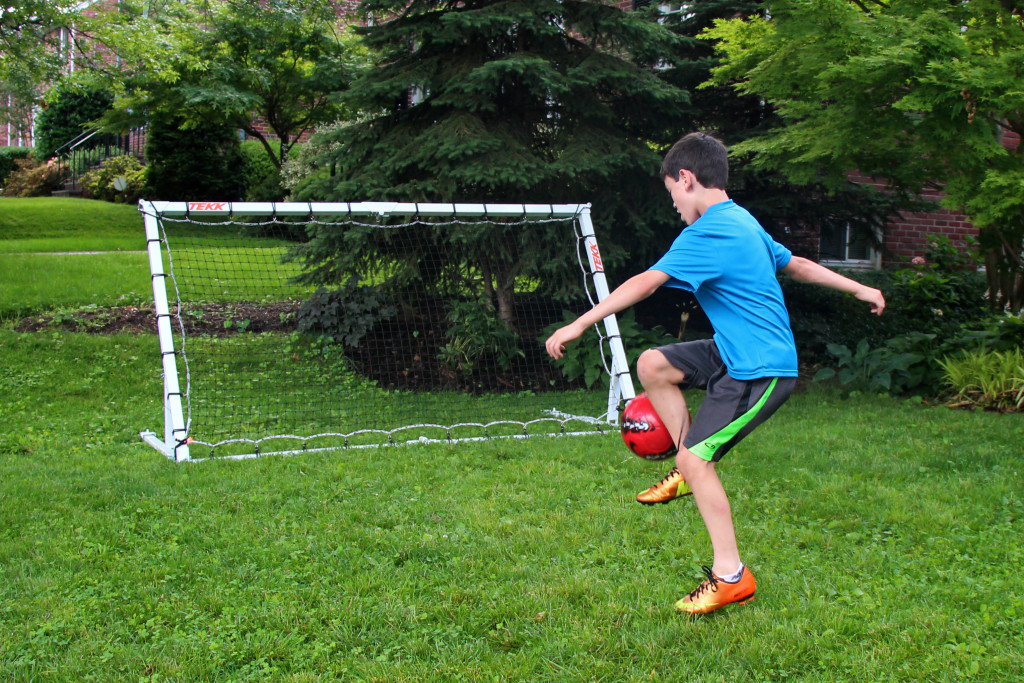In order to achieve best possible results for young players (not referring to game results) you need to have a plan. That plan is going to go from a macro cycle (seasonal plan) to a micro cycle (one session). Your sessions will vary from simple to more complex materials and also from single to multiple technical and tactical points. Another thing to consider is what should your session look like.
In the next 6 steps we will try to explain how to deliver a “Methodical Soccer Practice”.
1 – Plan Accordingly
Plan your session ahead of time and make it age appropriate for your players (learn more by reading this article – Development Over Winning: 8 Aspects of Proper Player Development). It doesn’t mean your players should work on things you saw FC Barcelona work on the internet.
The practice should have a natural flow that progresses from simple, technical work to more complex exercises. You can divide your training into 4 categories with time for breaks in between (not necessarily after every progression).
– Technical Activity:
Lots of technical work and repetition in small groups, from unopposed to lightly opposed.
– Small Sided Activity
Your technical training should progress into a little more advanced, opposed work that can be directional or non-directional.
– Expanded Small Sided Activity:
This segment looks more game like and must be opposed and directional.
Last part is the scrimmage with rules you can adjust based on the needs of your session.
The focus should be on your topic but you can’t ignore other technical and tactical issues that you might come across during your session. Be reasonable with how much you stop the session and try to coach through the flow, especially in the later stages of the training.
Here is a SAMPLE PRACTICE TEMPLATE by the United States Soccer Federation (USSF)
2 – Demonstration
Show what you want your players to do. Be comfortable demonstrating techniques and doing it the way you want your players to do it – passionately, accurately and dynamically. Also, besides visual learning, young players will best replicate your movement and will learn quickly. Stress to your players the importance of paying attention to detail and proper technique. They won’t be able to excel to more complex material unless basic technical aspects are learned first and properly. Be patient and take time, when necessary.
 photo by woodleywonderworks/ licensed under CC BY 2.0
photo by woodleywonderworks/ licensed under CC BY 2.0
3 – Repetition
Give your players plenty of repetition. From creating small and short lines to repeating the material from time to time. Also, be aware of the quantity vs. quality trap. It doesn’t mean they will learn just by repeating certain technique. They need to execute things properly. After a little while, repetition can become boring and white noise to players. Some players will soak the information quickly while others might not. Pay attention to all but make sure that the ones who need more time are provided with just that.
4 – Teach more than one way or situation
Players need to understand when they need to apply what they’ve learned to specific situations. So, for game purposes, paint the picture of when this might happen and in what forms. For example, if you’re teaching them how to open up properly make sure you explain to them there will be more than one channel or option to open up to. Or, if you’re teaching passing and receiving, make sure they understand there is more than one way to execute and more importantly, which technique we use will differ from situation to situation. That way, they will think about it in a broader context.
5 – Game Application
The game is the best teacher. Some players might just need to see it in the game before understanding what you’re referring to in training. Let players try, experiment and make mistakes. The process of trial and error will help them learn. The more comfortable they are in trying, the more comfortable and creative they’ll become. You also need to differentiate between your players trying and goofing around.
6 – Correction & game application for progress purposes
Go back to training and re-visit with the aspects that were not working. You might need to start the whole process again and dig deeper this time or it might be just certain parts that need to be refreshed. The more systematic you are, the better your players will be. Every detail matters and can come up in the game situation.
If your players are progressing well, keep challenging them with more complex material, from technical to tactical. Reward your players with public praise for the parts that really work. Positive reinforcement will motivate your players to do more. On the other hand, be ready to correct and teach your players that mistakes are a part of the game as long as they’re correcting them.
Be thorough and detail oriented in your work. Focus on proper technique, don’t cut corners and give time for your players to grow. It will be a longer path, a path that won’t show instant results. But, when it happens and your players show progress, it will be the most rewarding aspect of coaching that a teacher can receive. In the words of a great coach and teacher John Wooden who said, “If you don’t have time to do it right, when will you have time to do it over?”


No comments yet.